12th April 2019
Outside Fortress Europe Excerpts
This Global Business Strategy Blog post is based upon unabridged excerpts from Chapter Six, Strategic Marketing and Global Brand Management, in Outside Fortress Europe: Strategies for the Global Market.
Context Reference
Hancock, T. (2019, 12 April). Luxury brands focus on China’s younger consumers. ft.com.
Outside Fortress Europe Excerpt
The strategic marketing mix
As mentioned earlier in the chapter, the marketing mix has traditionally been taught as the 4Ps of Product, Place, Promotion and Price. Service markets have distinctive characteristics from goods markets and therefore need a few additional Ps. The distinguishing features of service markets are broadly fourfold, and they deserve attention, not least because modern economies are typically dominated by service industries (for excellent insights into customer focus and services marketing, the author’s recommended textbook, based upon the multiple criteria presented in the ‘Introduction to the Global Business Strategy Blog’ and extracted here, is Wilson, et al., 2016, Services Marketing: Integrating Customer Focus Across the Firm).
In the meantime, to address these service industry challenges the original four Ps were extended to 7, the additional variables being: people; process; physical evidence. The original concept of the marketing mix had 15Ps (Borden, 1964) and, over the years, a variety of writers and academics have attempted to redefine its composition. But the biggest ‘paradigm shift’ was based upon a recognition that the traditional 4Ps were essentially a supplier perspective on marketing management: we make products, we set prices, we place products and we promote our wares. But customers seek benefits, they incur costs, they seek convenience and they want to communicate, not be shouted at.
It’s difficult to pinpoint who made the conceptual leap from 4Ps to 4Cs but Professor Philip Kotler (2000), as ever, popularised it and brought it mainstream, citing Lauterborn’s 1990 article New Marketing Litany: 4Ps Passé; C-Words Take Over. Figure 1 accommodates these multiple variations on the strategic marketing mix theme but please note again its primary purpose as featured in the caption: customer-focused, competitively differentiated.
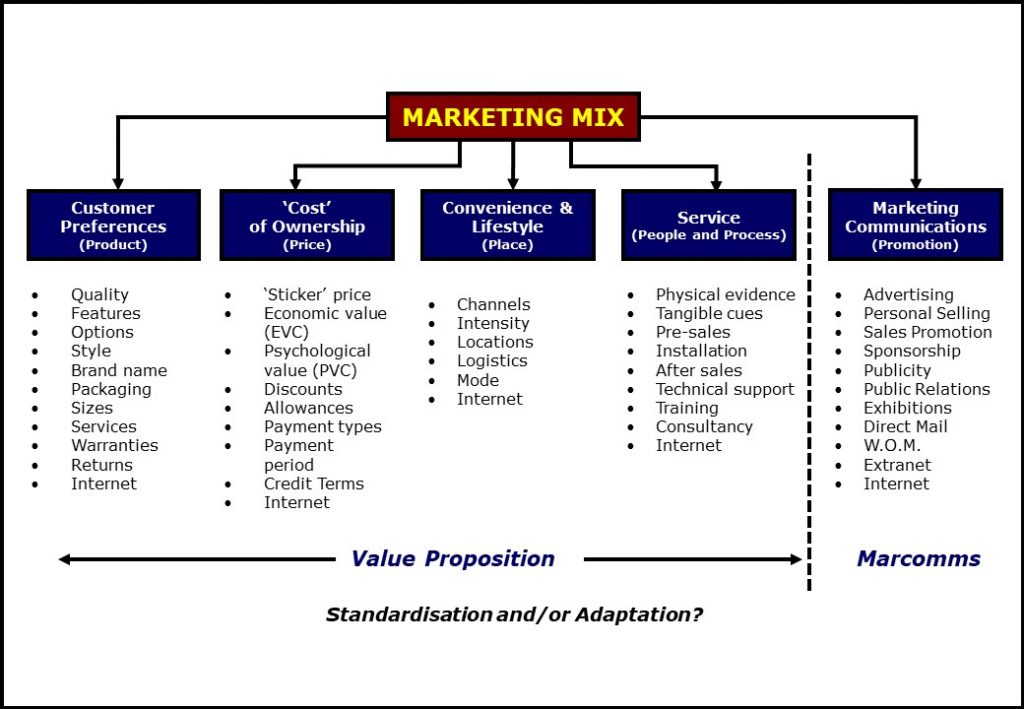
While this schematic of the strategic marketing mix is a universal construct, variations on its central theme are required to address the specific challenges in the design and delivery of successful global business strategies and these are summarised in the brief sections which follow.
Standardisation versus adaptation in the international marketing mix: Complexity and nuance
From an international marketing management perspective, the key question for marketing professionals is the extent to which the marketing mix must be adapted to be both effective and efficient for local market conditions. As ever, the ‘correct’ answer must be case-specific, but it is possible to generalise based upon multiple criteria.
Earlier in the chapter, we demonstrated why serving a complex and fragmented global market with an excessively standardised/unadapted marketing mix is doomed to failure. Figure 2 presents an alternative approach to global marketing management. Here a company recognises that there are multiple global markets but decides to supply only one of them with a sharply focused marketing mix.
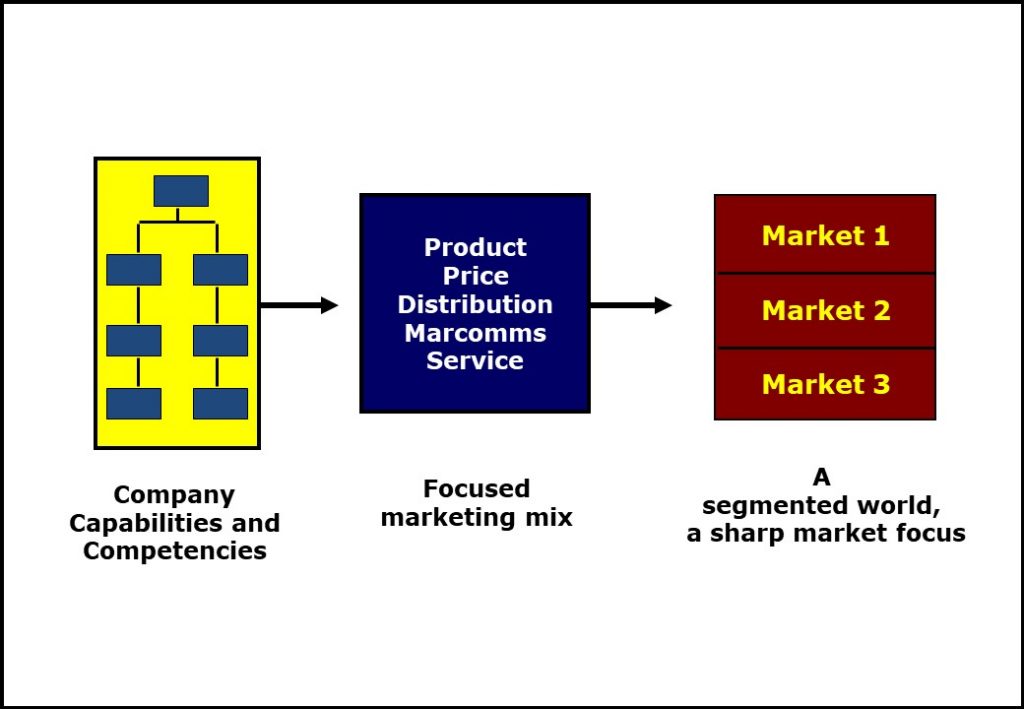
For this scenario, we will use a product brand case example and will again refer to Japan as a country-market, one amongst many. Culturally, Japan is amongst the most homogenous societies. Considering day-to-day working practice in Japan, during (long) working hours business conduct is formal, hierarchical, deferential but with a collective mindset. At the end of the working day, the atmosphere switches sharply to an informal mode and it is quite typical (and culturally ‘expected’) for managers and employees (the legendary salarymen) to meet up for a friendly, collective drink, a tradition known as Nomikai (飲み会) in Japanese society.
(An added bonus for junior employees is that it is socially acceptable to get drunk in the evening and be critical of the company and management, all forgotten the next day!).
It is also common that the most senior manager will have his bottle of scotch whisky brought to the table rather than order waitress/waiter service for each round of drinks – if there’s any left at the end of the session the server simply marks the bottle, takes the measure to determine the cost and stashes it for the next day. This type of communal drinking is a unique example of Japanese social-cultural behaviour and the bottle-on-the-table scenario is also an example of display, a global cultural brand management concept strongly associated with mid to higher-end brands such as Ralph Lauren, Tag Heuer, BMW etc. in richer countries and Marlboro cigarettes, Castrol lubricants and Heineken lager in emerging markets.
Recognising this unique example of Japanese consumer buyer behaviour, British drinks global giant Diageo created a special blend of its famous Johnny Walker Scotch Whisky especially for the Japanese market: Blue Label. For thirsty whisky drinkers amongst readers, drool over the image below in Figure 3 (an advertising campaign designed by Ferdinand Porsche, the artwork entitled private bar).
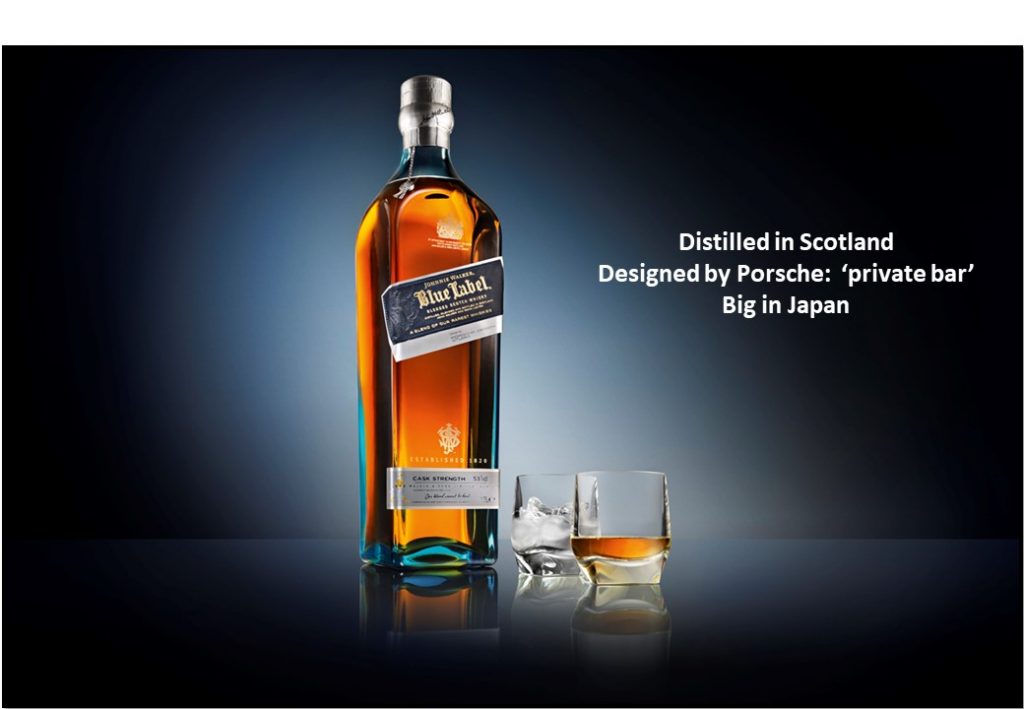
With Blue Label on the table, the top manager can exhibit his seniority and superiority – everyone around the table and in the bar knows the price of Blue Label and the premium to its black and red siblings, which is huge. Pure status symbol. Excellent global brand management!
Continuing our discussion of global customer marketing strategies, the logical next step is to acknowledge that there are multiple global markets and that if the company has the capabilities and competencies to serve them all with appropriately adapted marketing mixes, it will. Or it could. Or it should. This is illustrated in Figure 4.
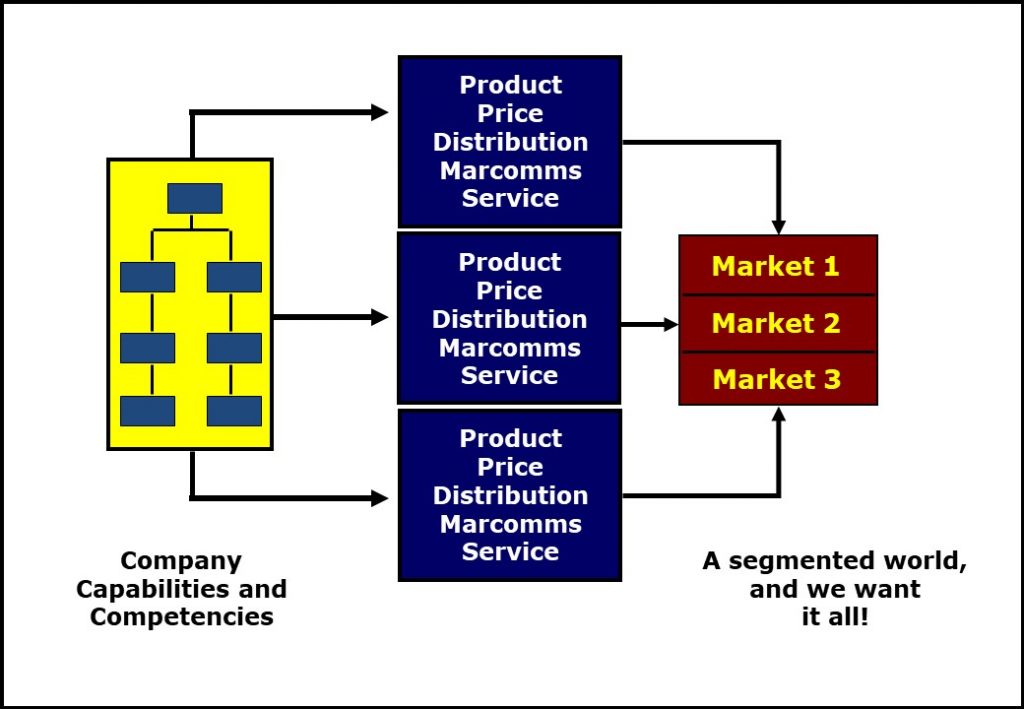
The logic of the standardisation versus adaptation conversation should now be clear and it can be stated that the real discussion should relate to the necessity for companies to achieve the appropriate balance between marketing standardisation and adaptation – as market conditions dictate – when designing global customer marketing strategies. The model presented in Figure 4 is very typical for global Fast Moving Consumer Goods companies (FMCG) such as P&G, Unilever, Danone, Heinkel, PepsiCo, General Mills, Kraft Foods, Nestlé and global brands such as Samsung, Matsushita and strong regional brands such as Savola, a Saudi-Arabian consumer goods company which operates across the middle east, Africa and Turkey.
The same principles apply equally to B2B markets, as is illustrated in Figure 5.
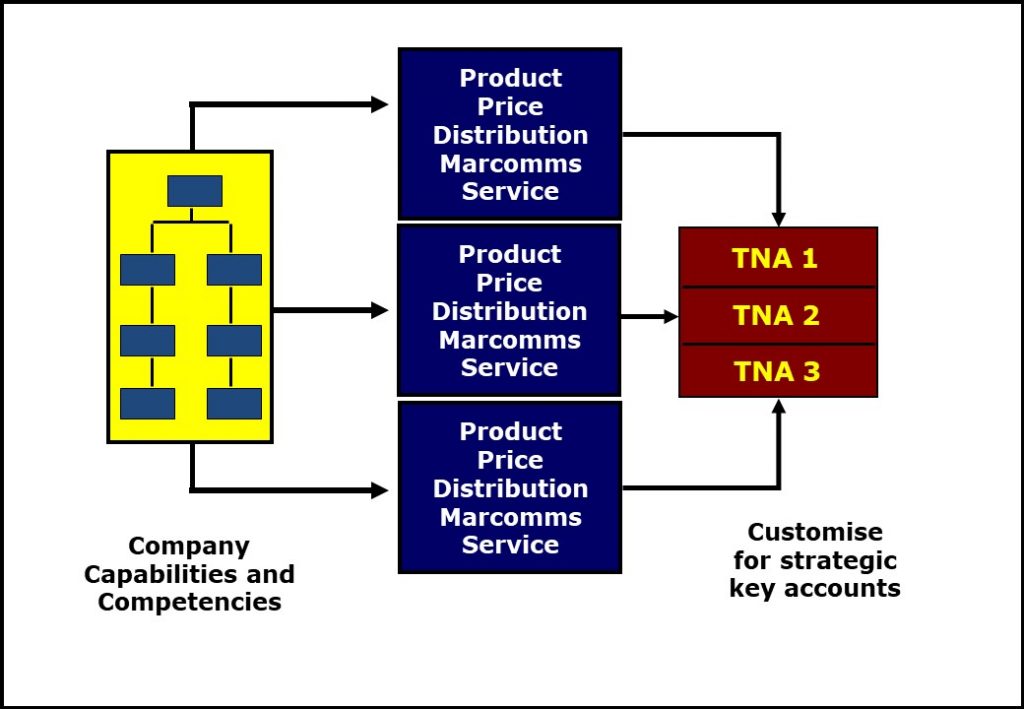
Here the company is targeting each individual customer as a Trans-National Account (TNA) with an exclusive offering and customised marketing mix. This approach is appropriate where customers are large enough for the strategy to be economically viable for suppliers to offer one-to-one marketing and customisation. Specific examples of such tight business relationships include IBM/Citibank, BP Air/British Airways, Castrol/BMW, Foxconn/Apple, P&G/Wall*Mart, Philips/Carrefour etc.
Outside Fortress Europe Excerpt References
Borden, N. H. (1964). The Concept of the Marketing Mix. Journal of Advertising Research, 4(June), 2-7.
Kotler, P. (2000). Marketing Management: Analysis, Planning, Implementation and Control (The Millennium Edition) (10 ed.). Englewood Cliffs, NJ: Prentice Hall International.
Lauterborn, R. (1990). New Marketing Litany: 4Ps Passé; C-Words Take Over. Advertising Age, 1(October), 26.
Wilson, A., Zeithaml, V., Bitner, M. J., & Gremler, D. (2016). Services Marketing: Integrating Customer Focus Across the Firm (3 Ed.). London: McGraw-Hill Education.
Please click/tap your browser ‘Back’ button to return to the location navigated from. Alternatively, click/tap the ‘Antique Keyboard’ graphic below to navigate to The Global Business Strategy Album page.
All content © Colin Edward Egan, 2022

